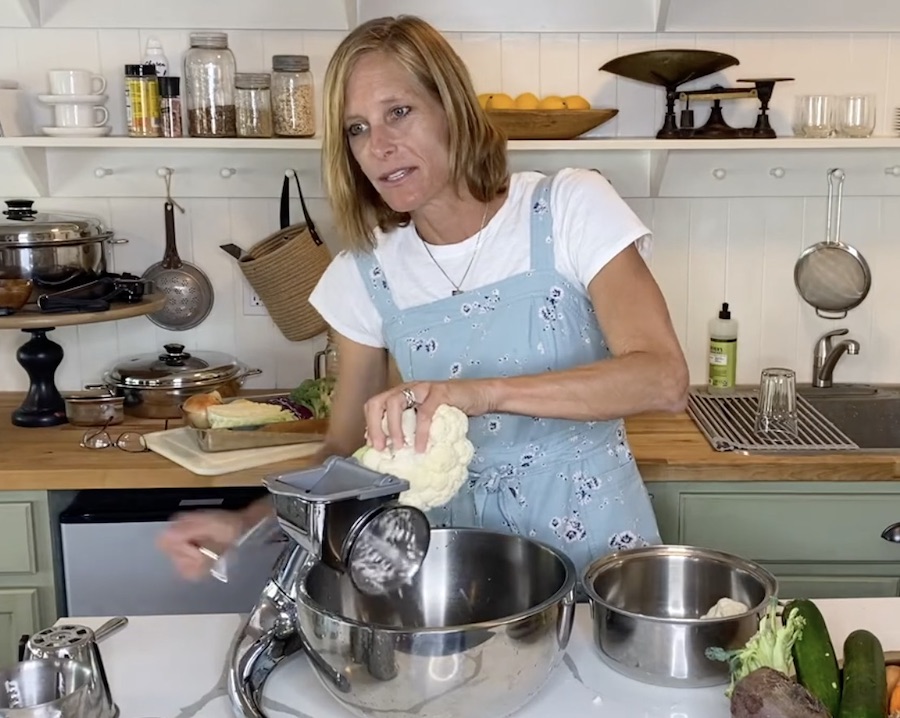Are you looking for a nutritious and delicious alternative to traditional rice? Look no further! Cauliflower rice is a fantastic substitute that’s low in carbs and calories but high in flavor and versatility. Making cauliflower rice at home is incredibly easy and quick, especially when you use a food processor. In this blog post, we’ll guide you through the easiest, fastest way to prepare cauliflower rice, discuss why fresh-cut is superior to prepackaged options, and provide you with a video tutorial showcasing different ricing techniques.
Benefits of Making Fresh Cauliflower Rice
Superior Nutrition and Flavor
When you buy precut vegetables, including cauliflower rice, they often lose some of their nutritional value and flavor due to extended storage and exposure to air. Freshly cut cauliflower rice, on the other hand, retains its full nutritional profile and vibrant taste. You’ll notice the difference right away!
Cost-Effective
Prepackaged cauliflower rice can be quite expensive compared to purchasing a whole head of cauliflower. By making your own, you save money while ensuring you’re consuming the freshest product possible.
Customizable Texture
Making cauliflower rice at home allows you to control the texture. Whether you prefer it finely riced or with a bit more substance, the choice is yours.
How to Make Cauliflower Rice with a Food Processor
Ingredients
- 1 large head of cauliflower
Equipment
- Food processor with a grating attachment or standard blade
Instructions
- Preparation: Start by removing the outer leaves from the cauliflower and cutting it into smaller florets. Discard the core.
- Food Processor Method:
- With Grating Attachment: Attach the grating disc to your food processor. Feed the cauliflower florets through the chute while the processor is running. This method results in a uniform, rice-like texture.With Standard Blade: If you don’t have a grating attachment, the standard S-blade will work just fine. Add the florets to the food processor and pulse until the cauliflower resembles rice. Be careful not to over-process to avoid mushy cauliflower.
- Hand Grater Alternative: If you don’t have a food processor, you can use a box grater. Use the medium-sized holes to grate the cauliflower into rice-sized pieces. While this method is more labor-intensive, it’s just as effective.
- Storage: Store your freshly made cauliflower rice in an airtight container in the refrigerator for up to 5 days or freeze it for up to a month.
Video Tutorial
Seeing the process in action can make things even easier. Watch our video below for a step-by-step guide and to explore several options when “ricing” the cauliflower using different techniques and equipment.
Cooking and Serving Suggestions
Now that you have your fresh cauliflower rice, the possibilities are endless! Here are a few cooking and serving suggestions:
- Simple Sauté: Heat a bit of olive oil in a large skillet over medium heat. Add the cauliflower rice and sauté for 5-7 minutes, until tender. Season with salt, pepper, and your favorite herbs.
- Cauliflower Fried Rice: Use your cauliflower rice as a base for a healthy stir-fried dish. Add vegetables, scrambled eggs, and a splash of soy sauce for a delicious, low-carb meal.
- Rice Substitute: Use cauliflower rice as a substitute in any recipe that calls for traditional rice. It pairs beautifully with curries, stir-fries, and grilled meats.
Making cauliflower rice at home with a food processor is not only the easiest and fastest method but also the best way to ensure you’re getting the most nutrition and flavor out of your cauliflower. Plus, it’s a cost-effective and customizable alternative to store-bought options.

